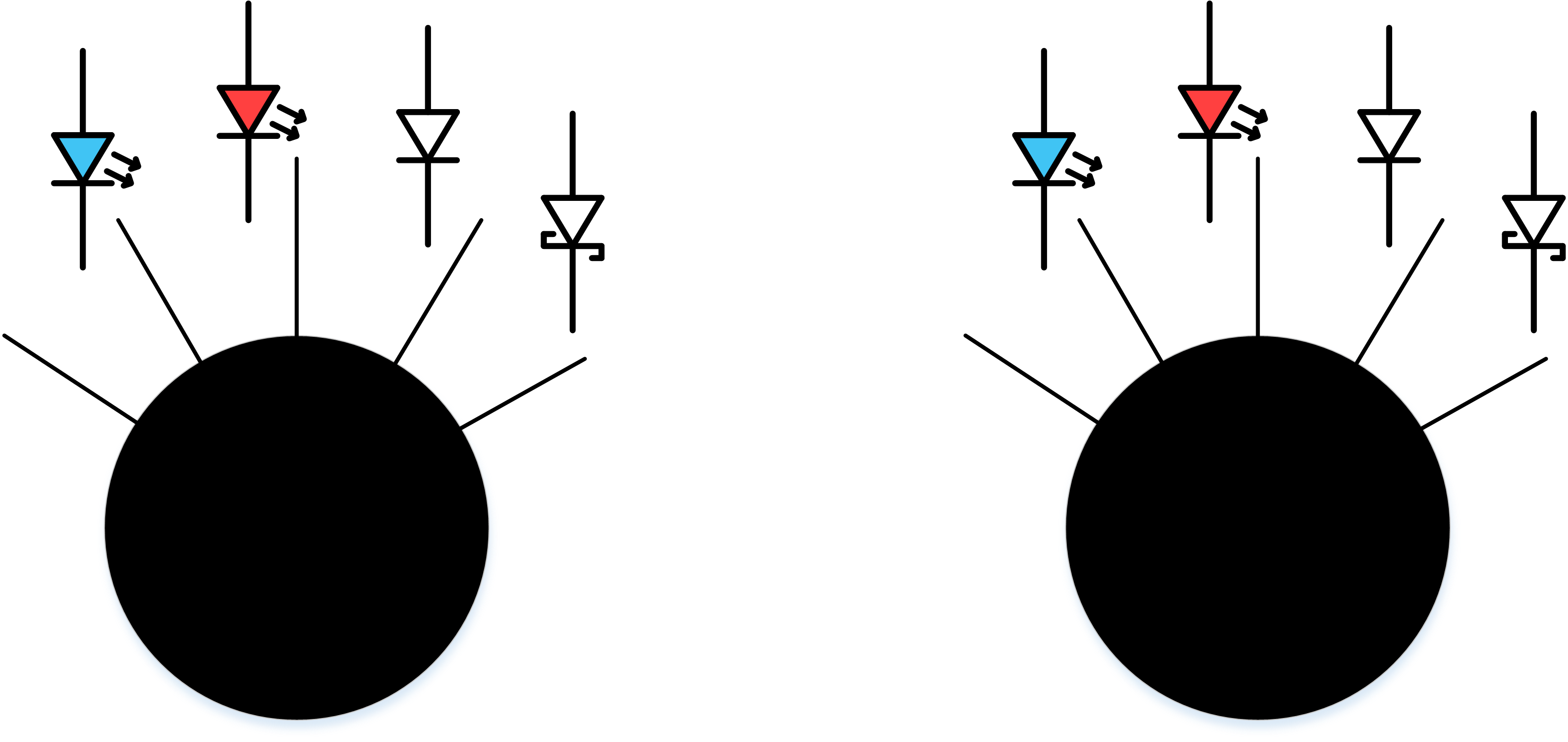In my previous post https://electric-safari.com/2019/03/17/turn-a-boss-ds-1-into-a-nice-overdrive/ I converted the DS-1 distortion pedal into something very close to an overdrive. One of the things I changed was the clipping section; one of the diodes was replaced by a red led. I tried some other combinations, but not very scientifically, honestly. The final one was chosen by ear, and that’s the one I published. But the doubt about some other combinations remained in my head after that.
Recently I got another DS-1 in ebay, and after modifying it (following my own instructions), I decided to give it another twist: let the user decide what diode to use (or no diode at all) for each side of the clipping section. In the next diagram I show how I connected two rotary selectors for choosing the diodes:


The rotary selectors are these ones: https://es.aliexpress.com/item/32947552565.html?spm=a2g0s.9042311.0.0.6e1663c0haFbmP
The actual devices with the diodes connected:


The X and Y terminals from the diagram above have to be connected to one of the removed diodes terminals in the PCB (see the white and blue cables):

It is not necessary to connect anything to the other diode because the two diodes are connected cathode to anode and anode to cathode. Don’t connect one of the terminals to ground, as you could do with some other hard clipping designs (ProCo Rat, for instance) because that is not how they are connected in the DS-1.
The result:

The two selectors act (as I have connected them for my own convenience) as two “taps” for the two sides of the signal (positive and negative), as seen from the supply jack side of the pedal. Open the tap and you have a more open (less clipped) signal, close the tap and you have a more clipped signal. The sequence of clipping goes like this:
- wide open, left position: no diode for clipping. The clipping comes from the transistor section and the operational
- second position from the left: blue led, Vf=2V
- third position from the left: red led, Vf=1.5V
- fourth position from the left: original diode: Vf=0.5V
- fifth position from the left: schottky diode: Vf=0.2V
Seen from the front, as you play, you can think about left=less volts / right=more volts.
You could say: there are repeated combinations, because for instance “red led + schottky = schottky + red led”, so I could have chosen a 15 positions (I think) rotary switch for all the valid combinations. Apart from the fact that a 15 positions switch is hard to find and it would have complicated the cabling, that hypothesis (“red led + schottky = schottky + red led”) is not completely true in the real world, because of two reasons:
- Let’s face the truth: two different diodes with the same name do not have exactly the same Vf, not to mention the rest of the specs.
- Clipping the positive part of the signal is not the same as clipping the negative part of the signal, because of the non linearities of the circuit design and components.
I think that setting two selectors is (as least for me) more intuitive. This is mostly an experiment that can be used also for gigging.
How does it sound
Yes, an experiment, but also a gigging pedal I am planning to use. In spite of the flexibility given by the two selectors, it doesn’t lose its original character. Selecting the combination: position 2 + position 3 (original diode + red led) it sound almost like the other DS-1 I modified, as expected, given the intrinsic differences of every unit components.
Selecting different positions for each selector, especially if they are very extreme, accentuates the asymmetrical character of the distortion (even harmonics, more on that here: https://blackstoneappliances.com/dist101.html)
The blue led combined with any other diode gives a very mid rangy character for my ear.
As you “open” the “tap”, the signal is louder. Selecting the open – open combination creates, as expected, a very loud but distorted signal, not bad given the fact that it is created by the transistor and the operational. Cannot be used as a clean boost pedal, but can crank a tube amp.
At the other extreme, selecting the two schottky diodes and maxing the distortion control creates an almost fuzzy distortion. If you max the three pedal controls, select a neck humbucker pickup and lower the guitar tone control, the fuzz is there for you to enjoy. That way all the treble harmonics that you hear come from the pedal itself, not from the pickup.
Please let any thoughts in the comments section, and if you try this mod please let me know.
The DS-1 mod I mention above (Turn a BOSS DS-1 into a nice overdrive) has been implemented at least by two friends of mine (thanks Pepe and Juanjo for trying it out), and they are very happy users of it, I think they are even gigging with it. They call it “warrior mod” because of my last name in spanish.


